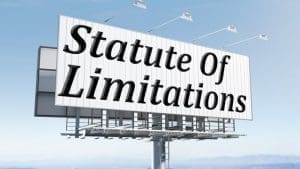Legal Industry Compliance: Staying Ahead of Regulatory Changes
Individuals frequently ask, “How can law firms prepare for the constantly evolving regulatory landscape?” The answer lies in building systematic compliance management frameworks that anticipate change rather than merely react to it. With regulatory agencies issuing hundreds of new mandates annually and technology reshaping practice requirements, staying ahead requires more than traditional approaches to professional responsibility.
The legal profession operates in an environment where regulatory shifts can fundamentally alter practice parameters overnight. From artificial intelligence governance to data privacy requirements, from state-specific practice rules to federal agency priorities, compliance has become a moving target requiring strategic foresight and operational agility.
What Are the Primary Drivers of Regulatory Change in Legal Practice?
Three fundamental forces are reshaping the compliance landscape for legal professionals. First, technological advancement continues to outpace regulatory frameworks, creating gaps that agencies rush to fill through emergency rulemaking and guidance documents. Second, political transitions at federal and state levels bring new enforcement priorities and interpretive approaches to existing rules. Third, consumer protection concerns drive lawmakers to impose additional transparency and accountability requirements on legal service providers.
The convergence of these forces creates a compliance environment where traditional reactive approaches prove insufficient. Law firms must develop proactive compliance strategies that identify emerging trends before they become mandatory requirements. This forward-looking approach protects against regulatory violations while positioning firms to capitalize on new opportunities created by regulatory changes.
How Do Current Regulatory Trends Affect Different Practice Areas?
Privacy and data protection requirements now permeate virtually every aspect of legal practice. State-level privacy regulations continue proliferating, filling gaps left by federal inaction and creating a complex patchwork of compliance obligations. Law firms handling client data across multiple jurisdictions must navigate varying notification requirements, consent protocols, and data retention standards.
Artificial intelligence governance presents unprecedented challenges for legal professionals. With expectations that most new attorneys will possess AI experience and agencies developing sector-specific guidance, firms must balance innovation opportunities with regulatory compliance requirements. The rapid evolution of AI capabilities means compliance frameworks must be designed for adaptability rather than static rule-following.
Financial services regulation continues expanding, with heightened scrutiny of third-party relationships and enhanced oversight of risk management practices. Law firms serving financial sector clients face increased due diligence requirements and potential indirect liability for client compliance failures.
Environmental and climate law demands are intensifying as corporations face mounting scrutiny over climate commitments and emissions reporting. Legal professionals must understand evolving disclosure requirements, liability frameworks, and enforcement trends to serve clients effectively.
What Challenges Do Small and Mid-Size Firms Face?
Regulatory compliance imposes disproportionate burdens on smaller legal practices, which lack the economies of scale that enable larger firms to absorb compliance costs efficiently. Research demonstrates that smaller firms allocate substantially higher percentages of their resources to regulatory tasks, creating operational strain that can threaten their market viability.
https://attorneys.media/digital-platform-regulation-challenges/The challenge extends beyond financial resources to include technical expertise requirements. Modern compliance demands understanding of complex technological systems, international regulatory frameworks, and specialized risk management protocols. Smaller firms often cannot justify hiring dedicated compliance specialists, forcing practitioners to develop expertise across multiple regulatory domains.
Resource allocation becomes particularly problematic when compliance requirements change rapidly. Small firms may invest significantly in systems or training only to discover that regulatory shifts have rendered their investments obsolete. This creates a regulatory treadmill effect where continuous investment is required simply to maintain compliance baseline.
How Should Firms Approach Technology-Driven Compliance?
Policy-as-code approaches enable firms to embed compliance requirements directly into their operational systems rather than relying on manual oversight processes. This architectural approach, pioneered in financial services, transforms compliance from a reactive constraint into a proactive capability that enhances both governance and business efficiency.
Real-time monitoring systems provide continuous visibility into compliance status across multiple regulatory domains. Rather than periodic compliance assessments, firms can implement systems that identify potential violations as they develop, enabling corrective action before formal violations occur.
Automated documentation reduces the administrative burden of compliance reporting while improving accuracy and consistency. Systems that automatically generate required disclosures, maintain audit trails, and track regulatory deadlines free legal professionals to focus on substantive legal work rather than administrative compliance tasks.
What Role Do State Regulations Play in National Compliance Strategies?
State-level regulatory divergence creates complex compliance matrices for firms operating across multiple jurisdictions. Each state’s unique requirements for attorney advertising, client fund handling, continuing education, and professional conduct mean that national firms must maintain detailed knowledge of varying standards across all practice jurisdictions.
Jurisdictional conflicts arise when state regulations contradict federal requirements or when neighboring states adopt incompatible approaches to similar issues. Legal professionals must develop frameworks for identifying and resolving these conflicts while maintaining compliance with all applicable authorities.
Local practice rules often contain nuances that can trap unwary practitioners. Court-specific filing requirements, local bar obligations, and municipal regulations can create compliance obligations that extend well beyond state-level professional responsibility rules.
How Do Political Changes Affect Regulatory Priorities?
Administrative transitions bring fundamental shifts in enforcement priorities and interpretive approaches. The expectation of reduced regulatory burden under changing political leadership means firms must balance preparation for potential deregulation with maintenance of existing compliance systems.
Agency leadership changes affect both the substance and intensity of regulatory oversight. New priorities regarding AI innovation, antitrust enforcement, and consumer protection create different risk profiles for legal service providers. Firms must monitor these shifts and adjust compliance strategies accordingly.
Congressional activity can rapidly alter the regulatory landscape through new legislation or oversight activities. Changes in committee leadership, investigation priorities, and legislative agendas create opportunities and risks that compliance-conscious firms must anticipate and address.
What Are the Essential Components of a Modern Compliance Framework?
Risk assessment protocols must be comprehensive, regularly updated, and integrated into operational decision-making. Rather than periodic compliance reviews, effective frameworks embed risk evaluation into routine business processes, ensuring that compliance considerations inform strategic decisions before implementation.
Training and education programs must be ongoing, role-specific, and responsive to regulatory changes. Generic compliance training proves insufficient in rapidly evolving regulatory environments. Effective programs provide targeted education based on individual roles, practice areas, and regulatory exposure.
Documentation and audit systems require careful balance between comprehensiveness and usability. Over-documentation can create operational inefficiencies, while under-documentation leaves firms vulnerable to regulatory scrutiny. The optimal approach maintains sufficient records to demonstrate compliance without creating excessive administrative burdens.
Vendor management becomes critical as firms increasingly rely on third-party service providers for technology, marketing, and operational support. Compliance frameworks must extend oversight to vendor relationships, ensuring that third-party activities do not create regulatory exposure for the firm.
How Should Firms Monitor Emerging Regulatory Trends?
Intelligence gathering requires systematic monitoring of multiple information sources rather than reactive responses to announced changes. Effective firms monitor agency rulemaking calendars, legislative committee activities, industry publications, and professional organization guidance to identify emerging trends before they become mandatory requirements.
Scenario planning enables firms to prepare for multiple regulatory futures rather than betting on single outcomes. By developing contingency plans for various regulatory scenarios, firms can respond quickly to changes without scrambling to understand new requirements.
Professional networks provide early warning systems for regulatory changes and practical guidance for implementation. Participation in bar associations, industry groups, and professional organizations creates information-sharing opportunities that supplement formal regulatory monitoring.
What Conservative Principles Guide Effective Compliance?
Personal responsibility remains fundamental to professional regulation, requiring individual attorneys to understand and fulfill their compliance obligations regardless of firm size or resource constraints. Technology and systems can support compliance efforts, but cannot substitute for professional judgment and accountability.
Institutional integrity demands that compliance efforts strengthen rather than undermine the foundations of legal practice. Regulatory requirements should enhance client service, professional competence, and public trust rather than create bureaucratic obstacles to effective representation.
Proportionality in regulatory design ensures that compliance requirements serve legitimate public interests without imposing excessive burdens that distort legal markets or limit access to legal services. Effective regulations balance protection goals with practical implementation considerations.
Due process protections must be maintained even as regulatory requirements become more complex and demanding. Practitioners deserve clear guidance, reasonable implementation timelines, and fair enforcement procedures that respect procedural rights while ensuring compliance.
How Can Firms Balance Innovation with Compliance?
Compliance-by-design approaches integrate regulatory requirements into innovation planning from the outset rather than treating compliance as an afterthought. This approach enables firms to pursue technological and operational innovations while maintaining regulatory compliance throughout the development process.
Pilot programs allow firms to test new approaches on limited scales before full implementation, reducing both compliance risk and operational disruption. Structured testing enables identification and resolution of compliance issues before they affect entire organizations or client relationships.
Regulatory sandboxes in some jurisdictions provide formal frameworks for testing innovative approaches while maintaining regulatory oversight. Firms should monitor and participate in these programs where available, as they offer valuable opportunities to pioneer compliant innovation.
What Does the Future Hold for Legal Industry Compliance?
The regulatory environment will likely become more complex rather than simpler, driven by continued technological advancement, increased consumer protection focus, and ongoing political evolution. Successful firms will be those that develop adaptive compliance capabilities rather than rigid rule-following systems.
Unified compliance platforms that integrate multiple regulatory domains will become increasingly valuable as firms struggle to manage diverse and changing requirements. Technology solutions that provide comprehensive compliance oversight while maintaining operational efficiency will command premium positions in the market.
Professional education must evolve to include regulatory competence as a core skill rather than a specialized knowledge area. Future legal professionals will need to understand compliance as an integral aspect of effective practice rather than an external constraint on professional activity.
The transformation of legal practice compliance from reactive rule-following to proactive risk management represents both challenge and opportunity. Firms that embrace this transformation while maintaining focus on fundamental professional values will be best positioned to thrive in an increasingly complex regulatory environment.
Ultimately, staying ahead of regulatory changes requires more than monitoring and reacting to new requirements. It demands building organizational capabilities that can anticipate, evaluate, and implement compliance measures as an integral part of strategic business development. This approach transforms regulatory compliance from a cost center into a competitive advantage that enhances client service while protecting professional interests.
Citations:
- Key 2025 Regulatory Changes Impacting Legal Sector Compliance
- Legal Trends 2025: Regulatory Compliance and Legal Industry Shifts
- Corporate Law Compliance Requirements for 2025 in the U.S.
- U.S. Consumer Privacy Laws: New Compliance Complexities for 2025
- New Year, New Compliance: Essential 2025 Legal Updates
- Product Regulatory and Liability Developments for 2025 and Beyond
- May 2025 Regulatory Update: Key Compliance Issues from the CFPB
- Biggest U.S. Regulatory Changes in Q1 2025
- Key Legal and Regulatory Changes Coming in 2025
- Top Regulatory Issues and Challenges Facing Businesses in 2025


















